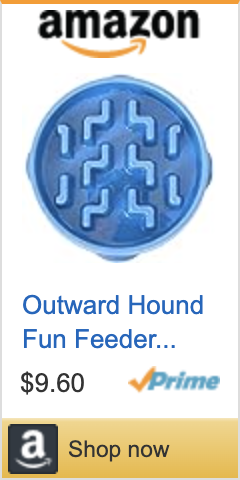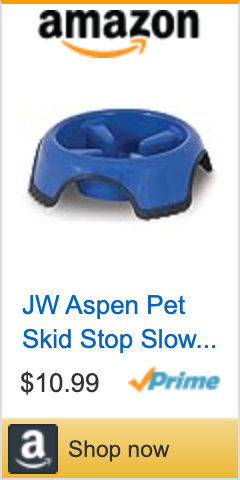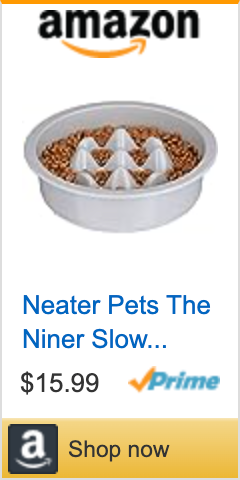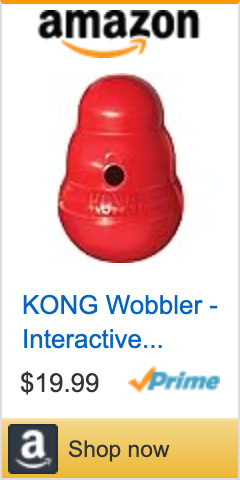- August 22, 2023
Why Investing in a Slow-Feeder Dog Bowl is a Game-Changer for Your Dog’s Health
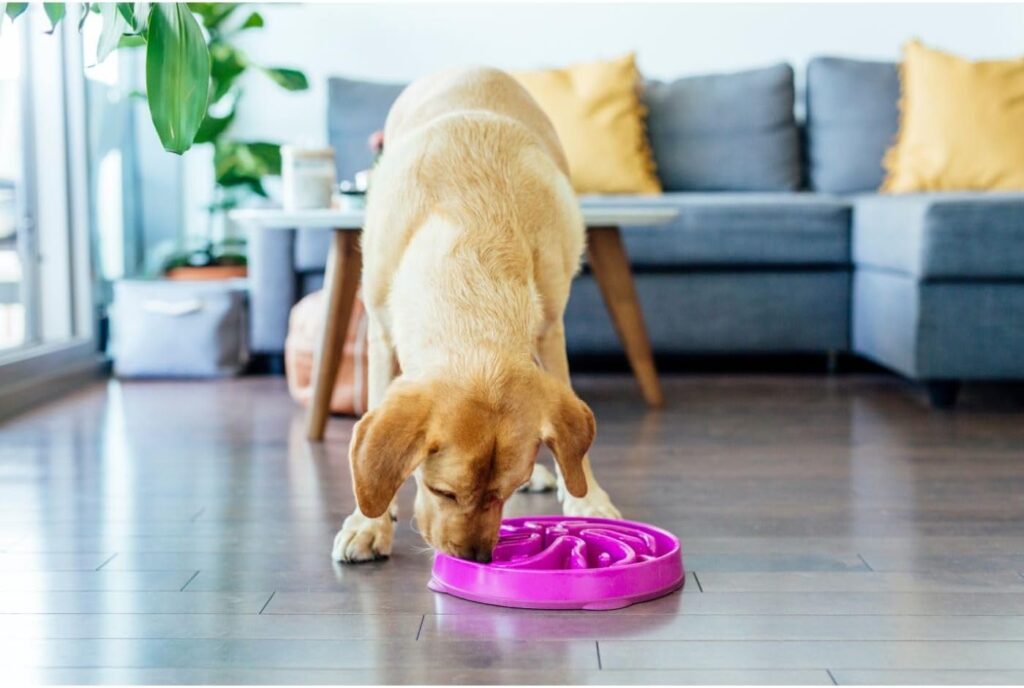
As pet owners, we all want the best for our furry friends, and that includes ensuring they have a healthy and balanced diet. One aspect of their feeding routine that often goes overlooked is the speed at which they eat. Many dogs have a tendency to inhale their food, which can lead to a range of health issues. That’s where slow-feeder dog bowls come in. These innovative bowls are designed to slow down your dog’s eating pace, providing a range of benefits for their overall well-being.
How slow-feeding dog bowls work
Slow-feeder dog bowls are designed with a variety of obstacles and patterns on the surface of the bowl. These obstacles create barriers that make it more difficult for your dog to access their food quickly. By forcing your furry friend to work a little harder for their meal, slow-feeder dog bowls encourage them to eat at a more moderate pace. This not only helps to prevent choking and digestive issues but also provides mental stimulation for your dog as they navigate their way around the bowl.
Benefits of using a slow feeder dog bowl
The benefits of using a slow-feeder dog bowl are numerous and far-reaching. Firstly, slow feeding helps to prevent a range of health issues associated with fast eating. When dogs eat too quickly, they are more likely to experience bloating, which can be a life-threatening condition. By encouraging a slower eating pace, slow-feeder dog bowls reduce the risk of bloating and promote better digestion.
Additionally, slow feeding can help with weight management. When dogs eat too quickly, they often consume more food than they actually need, leading to weight gain. By slowing down their eating pace, slow-feeder dog bowls help to regulate portion control and prevent overeating. This can be particularly beneficial for dogs who are prone to weight gain or have a tendency to gulp down their food.
Another advantage of using a slow-feeder dog bowl is the mental stimulation it provides. Dogs are intelligent creatures that thrive on problem-solving and engaging activities. By introducing a slow feeder dog bowl into their feeding routine, you are giving them a fun and challenging task to complete. This can help alleviate boredom and provide a sense of fulfillment for your furry friend.
Common problems with fast eating in dogs
Fast eating in dogs is a common problem that many pet owners face. While it may seem harmless, fast eating can lead to a range of health issues. One of the most serious problems associated with fast eating is bloating. Bloating, also known as gastric dilation-volvulus (GDV), occurs when a dog’s stomach fills with gas and twists on itself. This can be a life-threatening condition that requires immediate veterinary attention.
In addition to bloating, fast eating can also lead to choking and gagging. This is common in flat-faced or brachycephalic dogs including breeds like bulldogs, pugs, boxers, Boston terriers, Chow Chows, Lhasa Apsos, Shih Tzus, and Cavalier King Charles Spaniels.
When dogs gulp down their food without properly chewing, they are more likely to have food get stuck in their throat. This can cause them to choke or gag, which can be distressing for both the dog and the owner.
Furthermore, fast eating can contribute to poor digestion. When dogs eat quickly, they tend to swallow a lot of air along with their food. This can result in excessive gas and stomach discomfort. It can also lead to indigestion and other digestive issues.
Different types of slow-feeder dog bowls
Slow-feeder dog bowls come in a variety of shapes, sizes, and materials. The most common type of slow-feeder dog bowl is a bowl with built-in obstacles or patterns on the surface. These obstacles can be in the form of ridges, mazes, or patterns that make it more challenging for your dog to access their food quickly.
Another type of slow-feeder dog bowl is a puzzle feeder. These bowls are designed to make your dog work for their food by requiring them to solve a puzzle or manipulate certain parts of the bowl to access their meal. Puzzle feeders provide mental stimulation and can be particularly beneficial for dogs who are highly intelligent or easily bored.
There are also slow-feeder dog bowls that are designed to mimic natural foraging behavior. These bowls have a raised center or scattered compartments that simulate the experience of hunting for food in the wild. By encouraging your dog to engage in this natural behavior, these bowls promote a slower eating pace and provide mental enrichment.
Factors to consider when choosing a slow-feeder dog bowl
When choosing a slow-feeder dog bowl, there are several factors to consider. Firstly, you’ll want to take into account the size of your dog and their eating habits. If you have a small dog or a dog with a short snout, you’ll want to choose a bowl with smaller obstacles that are easier for them to navigate. On the other hand, if you have a large dog or a dog that tends to gulp down their food, you may want to opt for a bowl with more challenging obstacles.
The material of the bowl is also an important consideration. Slow-feeder dog bowls are typically made from plastic, stainless steel, or ceramic. Plastic bowls are lightweight and easy to clean, but they can be more prone to scratches and harboring bacteria. Stainless steel bowls are durable and hygienic, but they can be noisy and less visually appealing. Ceramic bowls are stylish and easy to clean, but they can be fragile and break if dropped.
Additionally, you’ll want to consider the stability of the bowl. Some slow-feeder dog bowls come with non-slip bases or rubberized bottoms to prevent them from sliding around during mealtime. This is particularly important if you have a dog that tends to be enthusiastic or aggressive when eating.
Training your dog to use a slow feeder dog bowl
Introducing a slow feeder dog bowl to your dog’s feeding routine may require some training and patience. Start by placing a small amount of food in the bowl and allowing your dog to explore it. Encourage them to use their nose and paws to navigate around the obstacles and access their food. Reward them with praise and treats for their efforts.
If your dog is having trouble using the slow feeder dog bowl, you can try adding some high-value treats or wet food to entice them. Gradually increase the amount of food in the bowl as your dog becomes more comfortable and proficient at using it. Be patient and consistent with the training, and remember to always provide a positive and rewarding experience for your furry friend.
Slow feeder dog bowl recommendations
There are many slow-feeder dog bowls available on the market, each with its own unique features and benefits. Here are a few recommendations to help you get started:
- Outward Hound Fun Feeder Slow Feed Dog Bowl – This bowl features a maze-like design with multiple ridges and valleys to slow down your dog’s eating pace. It comes in various sizes and colors to suit your dog’s needs.
- JW Pet Skid Stop Slow Feed Dog Bowl – This bowl has a unique design with large interior indentations that create obstacles for your dog. It also features a non-skid bottom to prevent it from sliding around during mealtime.
- Neater Pet Brands Slow Feed Bowl – This bowl has a raised center with multiple compartments that encourage your dog to eat around the obstacles. It also comes with a non-slip base for added stability.
- Kong Wobbler Dog Toy – While not a traditional slow-feeder dog bowl, the Kong Wobbler is a puzzle toy that dispenses food as your dog plays with it. It provides mental stimulation and slows down your dog’s eating pace.
DIY slow-feeder dog bowl options
If you’re feeling creative, you can also make your own slow-feeder dog bowl at home. Here are a few DIY options to consider:
- Muffin Tin Feeder – Simply place your dog’s food in a muffin tin and cover each compartment with tennis balls. Your dog will have to move the tennis balls around to access their food, slowing down their eating pace.
- PVC Pipe Feeder – Cut a length of PVC pipe and drill holes along the sides. Place your dog’s food inside the pipe and let them roll it around to release the kibble. This creates a fun and challenging feeding experience.
- Scatter Feeding – Instead of using a traditional bowl, scatter your dog’s food around the yard or inside your home. This forces them to use their nose and forage for their food, promoting a slower eating pace.
Conclusion: Investing in your dog’s health with a slow-feeder dog bowl
Investing in a slow-feeder dog bowl is a game-changer for your furry friend’s health. By slowing down their eating pace, these bowls help prevent a range of health issues such as bloating, choking, and poor digestion. They also provide mental stimulation and promote weight management. When choosing a slow-feeder dog bowl, consider factors such as size, material, and stability. Remember to train your dog to use the bowl and provide positive reinforcement throughout the process. Whether you opt for a ready-made bowl or a DIY option, your dog will thank you for investing in their health and well-being.
What do you think?
Related Articles

New Puppy Checklist: Gear You’ll Need for Your New Dog
Getting a new puppy is really exciting, but before you welcome them home, it’s important to prepare your space for them. Since puppies need a
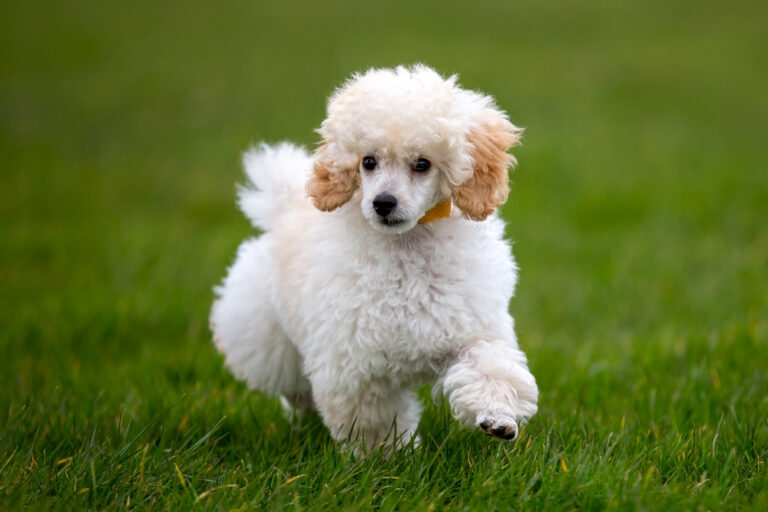
How Big Do Mini Poodles Get? Vet Reviewed Average Weight & Growth Chart – Dogster
The information is current and up-to-date in accordance with the latest veterinarian research. Learn more » When you buy a Miniature Poodle, you might not

Can Police Dogs Smell Nicotine? Vet Verified Facts & Info – Dogster
The information is current and up-to-date in accordance with the latest veterinarian research. Learn more » While cigarette sales have been declining steadily for decades,
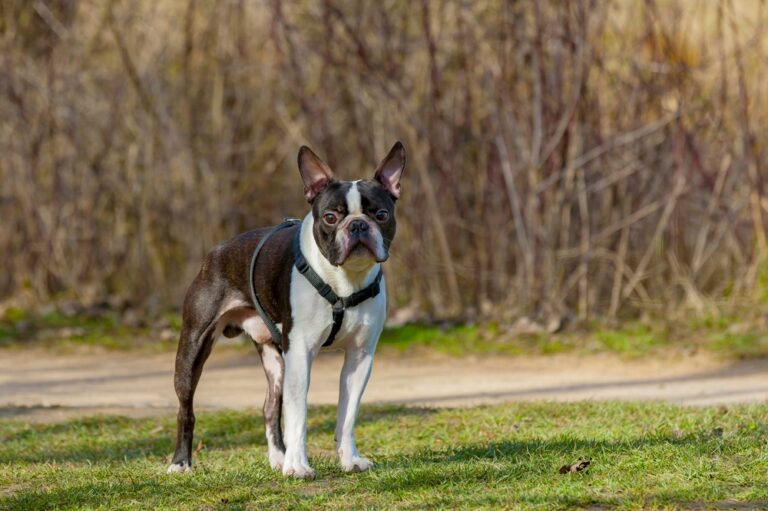
How Old Is 5 in Dog Years? Vet-Approved Guide to Each Size of Dog – Dogster
The information is current and up-to-date in accordance with the latest veterinarian research. Learn more » A common method for calculating a dog’s age is


